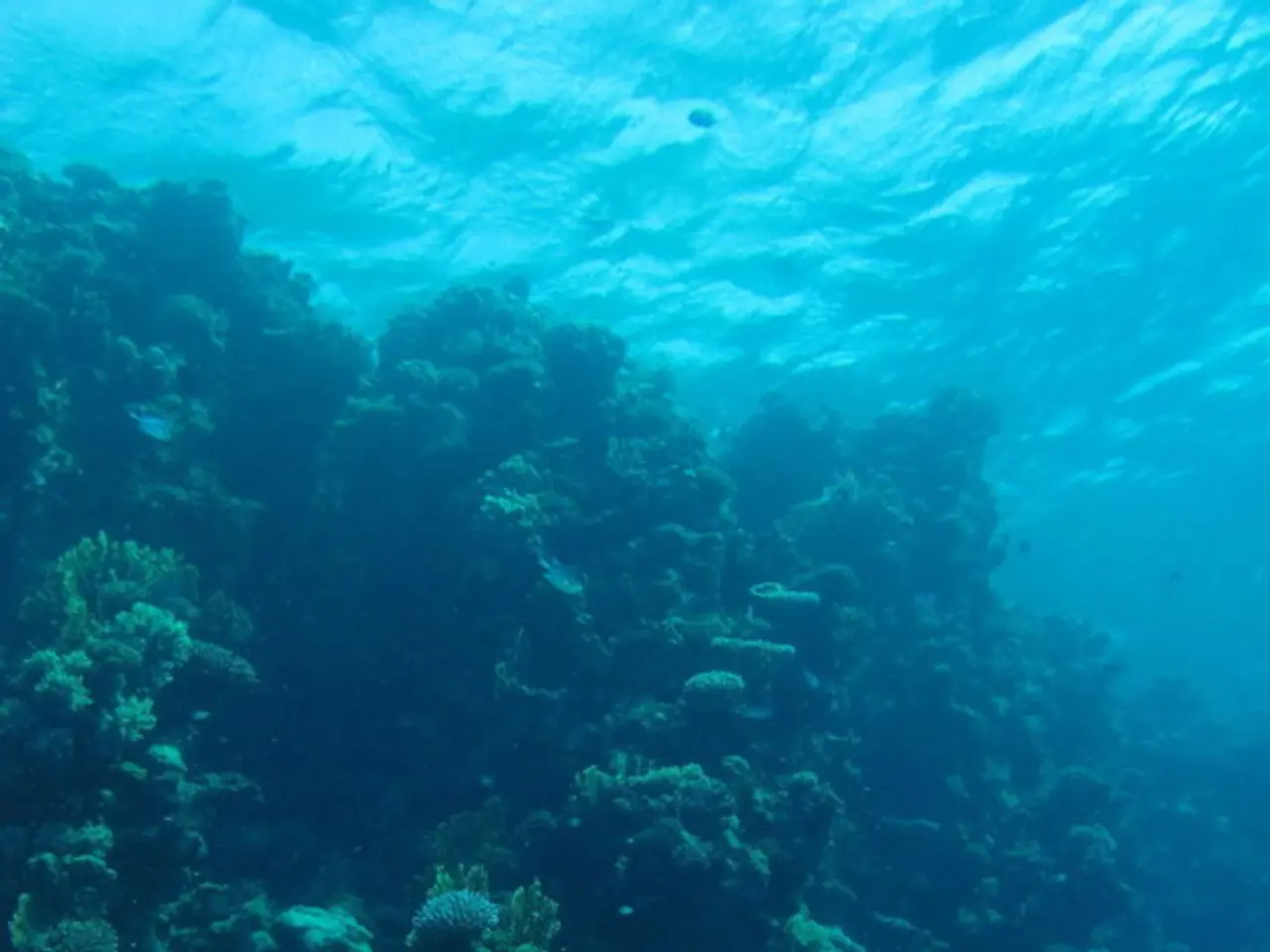China intensifies involvement in oceanography studies at Nice location
China Moves Towards Ratifying High Seas Treaty
China is actively pursuing the domestic ratification process of the High Seas Treaty, a significant step towards its commitment to international ocean governance and conservation [1][5]. As of mid-2025, China has not yet completed the ratification process, but this marks the first public confirmation that it is moving forward internally with ratifying the treaty.
The High Seas Treaty, formally known as the UN agreement on the Conservation and Sustainable Use of Marine Biological Diversity of Areas Beyond National Jurisdiction (BBNJ), requires ratification by at least 60 countries to enter into force. By July 2025, 50 countries had ratified it, with China among the signatories yet to finalize ratification [1]. The ratification process in China is complex, involving multiple government departments, which partly explains the delay [1].
China's engagement with the treaty aligns with its broader marine governance agenda, including initiatives like the 21st century Maritime Silk Road and over 100 cooperation programs aimed at sustainable marine development and helping developing countries achieve UN Sustainable Development Goals related to oceans [1]. Once ratified, China will be able to participate fully in the treaty’s key conservation mechanisms such as environmental impact assessments in international waters, sharing of marine genetic resources, and establishing protected areas beyond national jurisdiction [1][3].
The treaty's impact on ocean governance and conservation is expected to be substantial once it comes into force, as it activates institutional tools for compliance and dispute resolution, helping safeguard marine biodiversity on the high seas. China's ratification is important given its status as a major maritime nation with significant ocean activity. Accelerated ratification by China and other major countries like the UK (which plans to ratify by end of 2025) is critical to unlocking the treaty’s full potential in reversing marine ecosystem degradation globally [3][5].
At the third UN Ocean Conference (UNOC) in Nice, France, China was represented by academics, civil society representatives, and high-level officials, including Vice President Han Zheng. During the conference, Han advocated for the practice of true multilateralism and the observation of international rules on the ocean to achieve SDG14 [4].
China has also taken steps to address sustainability questions in its distant-water fisheries and is working on updating its fisheries law to address the use of harmful fishing gear, including bottom-trawl nets [7]. Moreover, China has recognized the value of communicating with international NGOs, such as WWF and Greenpeace, regarding distant-water fisheries [8].
In addition to the High Seas Treaty, China has made efforts in ocean governance, including setting a target to protect at least 30% of Earth's ocean by 2030 [6]. The deep ocean and its organisms remain a largely undocumented and unexplored mystery, and many in the ocean field want a scaling up of deep-sea research, an area where China has noticeably advanced in recent years [2].
Guo Hongyu, deputy director of the Greenovation Hub, championed scientific exchanges at a UNOC side event and believes that scientific consensuses lay solid foundations for policymaking [9]. The Qingdao Marine Conservation Society (QMCS) also explored the roles played by China-based NGOs in encouraging ocean protection at a UNOC side event [10].
China has joined the Port State Measures Agreement, a global treaty to curb illegal, unreported, and unregulated fishing activities [3]. The China Global Ocean Fusion Dataset 1.0 was unveiled at the UNOC, supporting seabed-resource exploration and other ocean activities [11]. China has many irreplaceable biodiversity hotspots in its fisheries and aquaculture industry [12].
In summary, China's ratification of the High Seas Treaty will enhance cooperative efforts to protect biodiversity in international waters and promote sustainable ocean use. The country's active pursuit of ratification reflects a growing commitment to international ocean governance and conservation frameworks.
- The High Seas Treaty, a crucial step for international ocean governance and conservation, requires ratification by 60 countries, and as of mid-2025, 50 countries have ratified it, with China among the signatories yet to finalize the process.
- China's commitment to this treaty aligns with its broader marine governance agenda, including initiatives like the 21st century Maritime Silk Road and over 100 cooperation programs focused on sustainable marine development.
- Once ratified, China will be able to participate fully in the treaty’s key conservation mechanisms, such as environmental impact assessments in international waters and establishing protected areas beyond national jurisdiction.
- The UN agreement on the Conservation and Sustainable Use of Marine Biological Diversity of Areas Beyond National Jurisdiction (BBNJ) aims to safeguard marine biodiversity on the high seas, and China’s ratification is important given its status as a major maritime nation.
- In the field of science, Guo Hongyu, deputy director of the Greenovation Hub, emphasized the importance of scientific exchanges at a UNOC side event, believing that scientific consensuses lay solid foundations for policymaking.
- A significant development in China's industry is its recent target to protect at least 30% of Earth’s ocean by 2030, a goal that aligns with UN Sustainable Development Goals related to oceans.
- Technology is also playing a role in China's ocean governance initiatives, as demonstrated by the unveiling of the China Global Ocean Fusion Dataset 1.0 at the UNOC, supporting seabed-resource exploration and other ocean activities.




